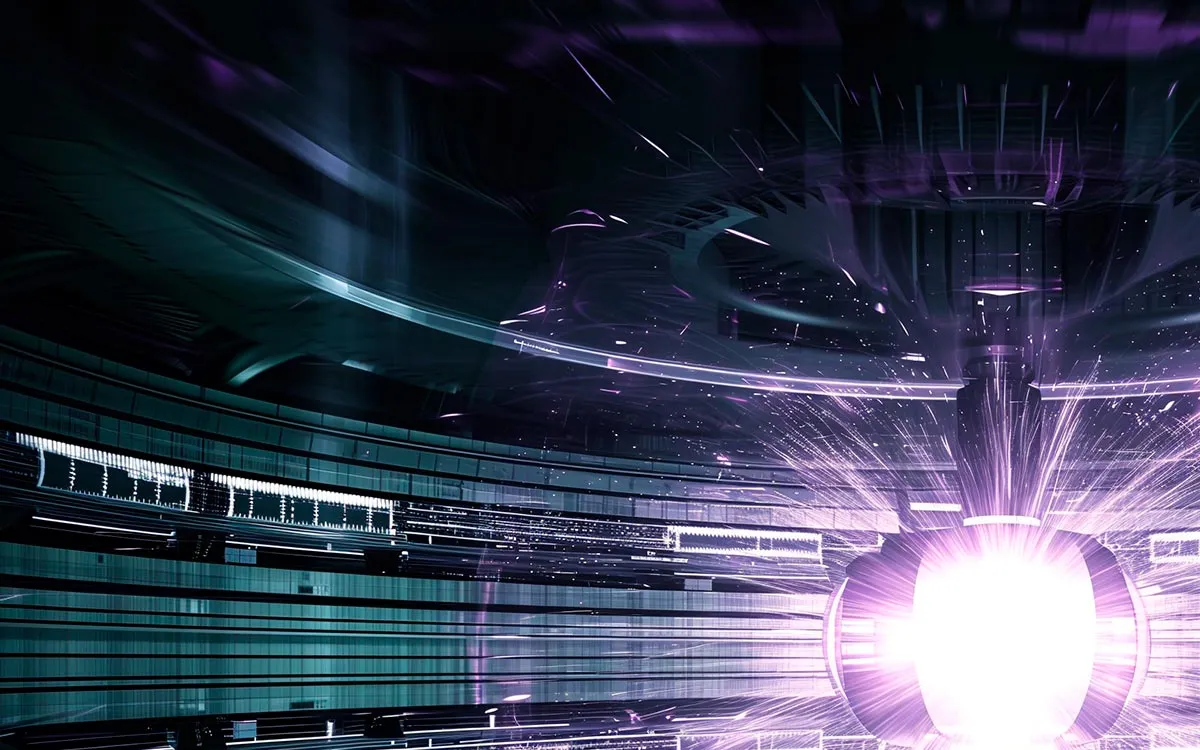
In a remarkable scientific achievement, a team at Los Alamos National Laboratory has successfully recreated a significant yet often overlooked experiment from 1938, which marks the first recorded observation of deuterium-tritium (DT) fusion. Their recent findings, published in Physical Review C, reaffirm the crucial contributions of physicist Arthur Ruhlig from the University of Michigan, whose pioneering work laid the groundwork for ongoing advancements in nuclear energy and national security programs.
Mark Chadwick, the associate laboratory director for Science, Computation, and Theory at Los Alamos, explained, “Ruhlig’s key insight was proposing that DT fusion occurs with a very high probability when deuterium and tritium are brought into close proximity.” By replicating his original experiment, the team could revisit Ruhlig’s conclusions, highlighting their accuracy and long-lasting influence on nuclear fuel research.
The DT fusion reaction plays a fundamental role in advancing various fusion-based technologies, including critical applications in defense and future clean energy solutions. It forms the backbone of projects like those at the National Ignition Facility, where scientists are striving to achieve controlled fusion.
In 2023, Chadwick and his colleagues, including theoretical physicist Mark Paris, embarked on a mission to compile a comprehensive history of early fusion research. A pivotal moment in this timeline arose during a July 1942 physics conference in Berkeley, where physicist Emil Konopinski proposed that among various fusion reactions, DT fusion was particularly promising for use alongside fission-based weapons. This insight came just months after the formal initiation of the Manhattan Project, prompting Chadwick and his team to investigate how Konopinski reached this conclusion.
While searching through archives at the National Security Research Center, Chadwick unearthed a 1986 audio recording of Konopinski discussing his rationale for pursuing DT fusion, which has since been made available on YouTube. In this recording, Konopinski attributes his interest in DT fusion to what he termed “pre-war” studies.
Tritium, a crucial element in DT fusion, was first identified in 1934 by a research team led by Ernest Rutherford, a central figure in early atomic theory. Following this discovery, Paris diligently searched through scientific publications and found a 1938 letter in Physical Review, authored solely by Ruhlig. In this letter, Ruhlig described a gamma-ray experiment while hinting at deeper implications for DT fusion.
Ruhlig’s experiment involved firing a beam of deuterons at deuterium and analyzing the resulting gamma-ray emissions. He detected high-energy protons, which he hypothesized were the result of secondary interactions from DT fusion. In a crucial assertion, Ruhlig estimated that approximately one in every 1,000 energetic protons resulted from such fusion reactions. Unfortunately, his work gained little traction and was infrequently cited.
Interestingly, both Ruhlig and Konopinski were students at the University of Michigan, sharing overlapping doctoral studies in the 1930s. Their mutual link to prominent physicist Hans Bethe further solidified their scientific connection. Despite Ruhlig’s work being largely overlooked, it is possible that Konopinski was influenced by Ruhlig's early insights on the probability of DT fusion.
Chadwick emphasized, “The evidence for Konopinski interpreting and taking up Ruhlig’s suggestion of the probability of DT fusion is circumstantial, but nonetheless strong.” To confirm Ruhlig's original observations, Chadwick and his team sought to replicate his experiment.
Under the guidance of Lab Director Thom Mason, the team collaborated with experimental physicists from Duke University to recreate Ruhlig’s experiment with modern precision. Using the laboratory’s Tandem accelerator, they produced a 3.5-mm deuteron beam, which was paired with a cobalt-alloy foil to effectively mimic the conditions of Ruhlig’s original setup.
In this updated experiment, the team directed the deuteron beam at deuterated phosphoric acid, utilizing a neutron detector to track secondary reactions. “For the first time at a low-energy nuclear physics facility, we were able to perform a DT fusion experiment as a secondary reaction following the initial deuterium-deuterium interaction,” commented Werner Tornow, a Duke University physicist. This work not only enriches our understanding of historical physics but also enhances our capacity to work with DT fusion in more complex environments.
The results from the modern experiment indicated the presence of secondary DT reactions, suggesting that while Ruhlig may have overestimated the ratio of neutron production, his core observations were indeed correct. Chadwick noted, “Regardless of the inconsistency of Ruhlig’s rate of fusion against our modern understanding, our replication leaves no doubt that he was at least qualitatively correct when he said that DT fusion was ‘exceedingly probable.’”
Ruhlig’s accidental discovery of DT fusion has significantly contributed to the peaceful application of this process in various energy projects and inertial confinement fusion experiments like those at the National Ignition Facility.
The team’s findings were published in Physical Review, the same journal that featured Ruhlig’s original observations in 1938, further solidifying the historical significance of this groundbreaking research.